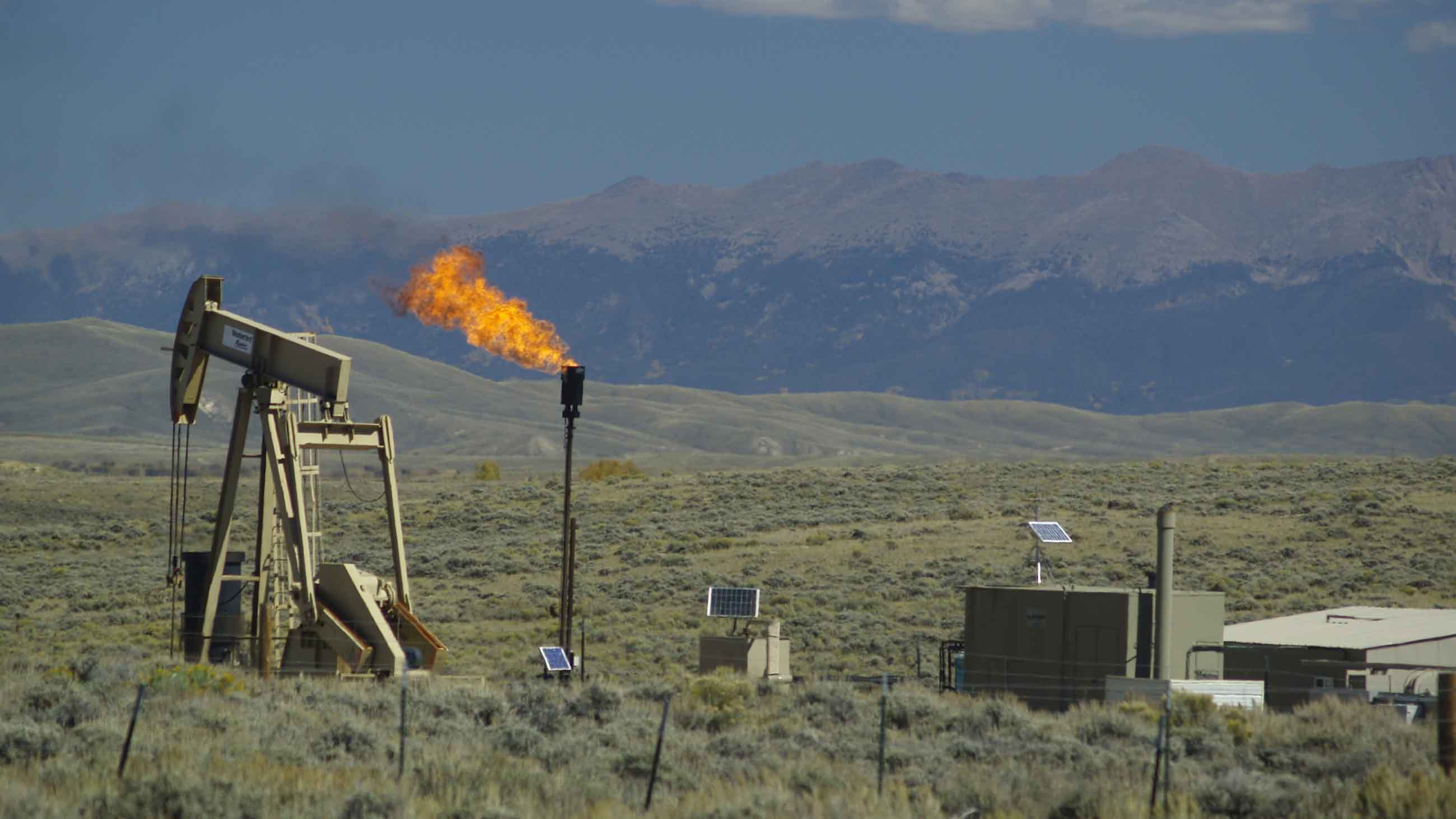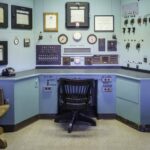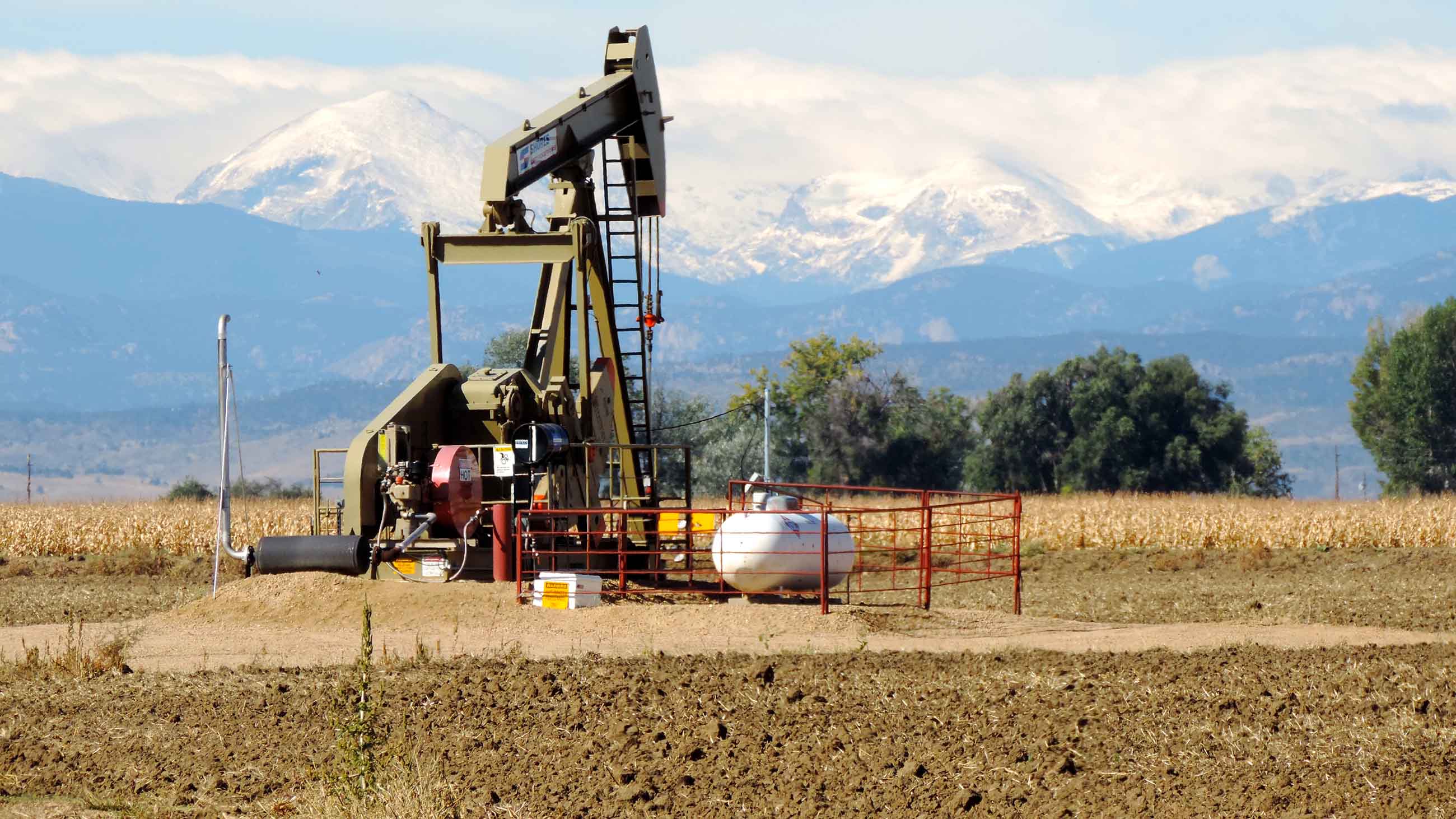In the Rural West: More Oil, More Gas, More Ozone
Grand Junction, Colorado seemed like the perfect spot for Jerry Nelson and his wife to retire from Champaign, Illinois, where he had been an economics professor at the University of Illinois. Ringed by stunning mountains and nestled against the confluence of the Colorado and Gunnison Rivers, the city of 62,000 people offered an ideal climate and plenty of hiking opportunities.
But in the winter of 2013, as Nelson flew into town after a business trip, he was shocked to look out his window to see a thick yellow haze, not the crisp mountain air he was used to.
“It was like flying back into Los Angeles on the worst days of the L.A. smog,” Nelson said. “There was brown haze everywhere.”
A cold air inversion had trapped polluted air in the Grand Valley that encompasses the city. Rattled by the smog, Nelson joined Citizens for Clean Air, a group of local residents determined to find out what was causing the pollution. Members shared stories about morning walk routines interrupted by haze and worsening asthma symptoms along the Western Slope, the part of Colorado west of the Continental Divide.
The 2013-2014 inversion was the worst the area had seen in recent years, but the resident activists are fearful that a growing population, a seemingly endless wildfire season, and the Trump administration’s push to expand oil and gas drilling could make those smoggy days a regular occurrence. According to data compiled by the left-leaning Frontier Group, part of the larger Public Interest Network of advocacy organizations, Grand Junction chad 86 days in 2016 in which the air quality index for ozone or particulate matter registered “moderate” or higher, a designation that the air could be unhealthy for people with some respiratory conditions. That was the fourth highest in the state, and only 12 fewer such days than the much bigger city of Denver experienced the same year.
The citizens’ group is now taking a data-driven approach to protecting their air, installing low-cost monitors around the region and building a record of pollution they hope can convince researchers and regulators to take action before smog levels become more dangerous. But it’s not just Grand Junction: In 2013, an ozone monitor in Rangely, Colorado (population 2,400) spiked to more than 100 parts per billion (ppb), on par with levels measured in Los Angeles the same year. Over the past decade, monitors in the Upper Green River Basin in Wyoming and the Uinta Basin in Utah have registered pollution levels above the Environmental Protection Agency’s health standards, and swaths of rural Texas have seen high ozone levels.
The phenomenon runs counter to national trends, which have seen ozone levels dropping steadily for decades. But a recent Tropospheric Ozone Assessment Report, which analyzed data from every available ozone monitor worldwide, found that in the Rocky Mountain region, non-urban areas are showing a slower decline than the rest of the country, with some regions even showing rising pollution. Rural monitors have also reported increases in southwestern Colorado and along the New Mexico-Texas border.
Ozone doesn’t come from any one source. Rather, it’s a mix of three ingredients: nitrogen oxide pollution from motor vehicles, power plants, and industrial operations; volatile organic compounds (VOCs) from household products and other anthropogenic sources, as well as plants; and sunlight. Rural areas in the Far West have historically had fewer emission sources, and yet they have been seeing high ozone readings in the winter, when the air should be cooler and cleaner.
Seth Lyman, director of Utah State University’s Bingham Entrepreneurship and Energy Research Center, studied the Uinta Basin and said one obvious culprit emerged: “We have nearly 100 percent certainty that oil and natural gas development are the primary sources of the pollutants that make wintertime ozone,” Lyman said. “The mix of pollutants we measure in air in the Uinta Basin is the same mix that we know comes from the oil and gas industry.”
It’s unlikely to change anytime soon: The Trump administration is pushing to expand natural gas production, holding four lease sales so far this year in Utah and Colorado, and offering formerly protected land for fossil fuel companies to develop. If energy companies drill there, residents and regulators fear the new wells could release large quantities of new pollutants.
“I’m not going to lie,” said Chad Meister, an air resources specialist with the Colorado office of the federal Bureau of Land Management. “If development blows up out there and we’re seeing impacts from other states, it’s definitely cause for concern.”
The tension between energy development and clean air has been simmering since the start of the natural gas boom two decades ago. Larry Svoboda, a former air regulator with the EPA’s regional office in Colorado, remembers when, during the George W. Bush administration, he noticed ozone levels spiking outside major cities like Denver and Salt Lake City.
“I thought there must be something wrong with the instruments,” said Svoboda, who has since retired. “We never thought we’d see production of ozone to the level that those concentrations were indicating. I just don’t think anyone had ever thought to look here before.”
EPA pollution monitors are typically clustered around high population areas, where there should be more ozone. But Svoboda found elevated levels in far less populated areas like the towns of Pinedale, Wyoming, and Vernal, Utah. Both were hotbeds of the natural gas boom that accelerated in the late 2000s with the spread of hydraulic fracturing.
Natural gas drilling can release VOCs, like benzene and toluene, and with more fracking, Svoboda and his colleagues feared those VOCs would create more ozone across the West. In 2008, he told High Country News that the drilling boom was “a disaster waiting to happen.”
What’s more, he felt the BLM — the government’s main leasing agency — wasn’t accurately assessing the ozone impact of new wells. After years of pushing, the EPA in 2011 crafted a memorandum of understanding with the Bureau and other agencies overseeing federal land, asking them to evaluate air-quality impacts before any leasing or permitting decisions and to help the EPA get a better picture of future emissions sources. It also encouraged agencies to consider alternative leasing options or controls on wells to reduce toxic emissions.
Today, environmentalists fear that extra level of scrutiny is being ignored. What’s more, a January memo from the Department of the Interior encouraged the government to skirt the mandatory environmental reviews laid out in the 1970 National Environmental Policy Act, which has been criticized by Republicans as a barrier to development.

The memo recommends wider use of a process called Determination of NEPA Adequacy (DNAs), which allows the BLM to issue leases without going through a new analysis of how a project might impact air, water, or wildlife. Environmentalists say that process — used under previous administrations, but more frequently under Trump — undermines the care that regulators have called for to protect the West.
“BLM is playing a shell game here,” said Diana Dascalu-Joffe, a senior attorney with the Center for Biological Diversity, a green group suing the Bureau. She pointed to expedited reviews for lease sales in Eastern Utah around the Uinta Basin this spring, even after the area was deemed in violation of the EPA’s ozone standards.
“Any reasonable decision maker would think that expanding lease sales is going to exacerbate the problem,” she said.
For its part, the BLM maintains that air quality is best considered later in the process, when companies formally request the chance to drill and the Bureau can better account for how much activity there will be. In addition, Colorado has upgraded to a state-of-the-art air modeling program that continually runs simulations of air quality across the state to incorporate projected new development, which it says will enable quicker and better decisions.
Industry also resists the extra oversight. “It’s just not up to BLM to deal with air quality — that’s the job of the EPA and the state,” said Kathleen Sgamma, president of the Western Energy Alliance, which represents fossil fuel companies. The memorandum that pulled the EPA into the leasing process, she said, was “playing mischief to tie things up.”
If a region is found to be in violation of the EPA’s ozone standards, local and state governments must impose controls to bring air-quality levels back to normal, a challenge in rural areas with fewer emissions sources. It can work: after Wyoming’s Upper Green River Basin was found to have violated EPA standards in 2012, control technology and changes in the permitting process helped reverse the problem (although pollution there spiked again last winter).
But it generally takes years to gather enough data to prompt action. Toxic ozone readings had been detected in Utah’s Uinta Basin as early as 2009, and in 2012 local officials drew attention to a troubling trend of infant deaths. Yet the area was only found in violation of ozone standards in April, and now the Uinta Basin is confronted with enforcing a regulatory crackdown that coincides with a drilling boom (emails obtained by the Sierra Club and reported by Politico showed that oil and gas producers in the area successfully lobbied the EPA to scale back some reforms).
Colorado says it’s keeping an eye on the Western Slope, but so far nothing has required official action. (Even with Rangely, just north of Grand Junction, registering astronomic levels, the town would need to report similarly high levels at least four days a year over three years to violate EPA rules.)
Karen Sjoberg, who leads Citizens for Clean Air in Grand Junction, maintains that EPA data doesn’t tell the full story. “There just aren’t enough air-quality monitors to find out what’s going on,” she said, especially given the region’s complex topography.
Hence the citizen science. The group has placed two dozen low-cost pollution monitors — built by Utah-based PurpleAir and paid for through donations — around the valley to track how pollution moves through the region. The devices use a laser to reflect and measure particles in the air, uploading data that gets displayed on a live map.
The monitors measure particulate matter, which accumulates from smoke, diesel exhaust, dust, and agriculture pollution, and contributes to the spring and summertime haze along the Western Slope. Low-cost ozone monitors are still in the works, but the group hopes to get some soon.
They’d like to correlate their data with weather trends, drilling activity, and public-health records to build a robust record of how pollution moves through the valley and how it affects residents. Such a record, Nelson said, could convince regulators that steps are needed to head off worse problems later.
It’s not as precise as EPA data, but Chris Colclasure, deputy director of Colorado’s air pollution control division, said that the agency “welcomes more monitoring data,” and that low-cost monitors can be “useful for detecting trends and identifying potential areas where there may be air quality problems that aren’t well understood.”
Grand Junction’s population is growing, meaning more cars and more pollution. And the gas boom isn’t going away. So Jerry Nelson and his fellow activists know that citizen science is their best weapon to push the powers that be to prevent more haze.
“That’s invaluable, when you go to the county commissioners who will say ‘well I don’t believe any of this stuff,’” Nelson said. “Well, here’s the data. We’re not just a bunch of greenies making this stuff up.”
Jason Plautz is a Colorado-based reporter covering energy and environment policy.










